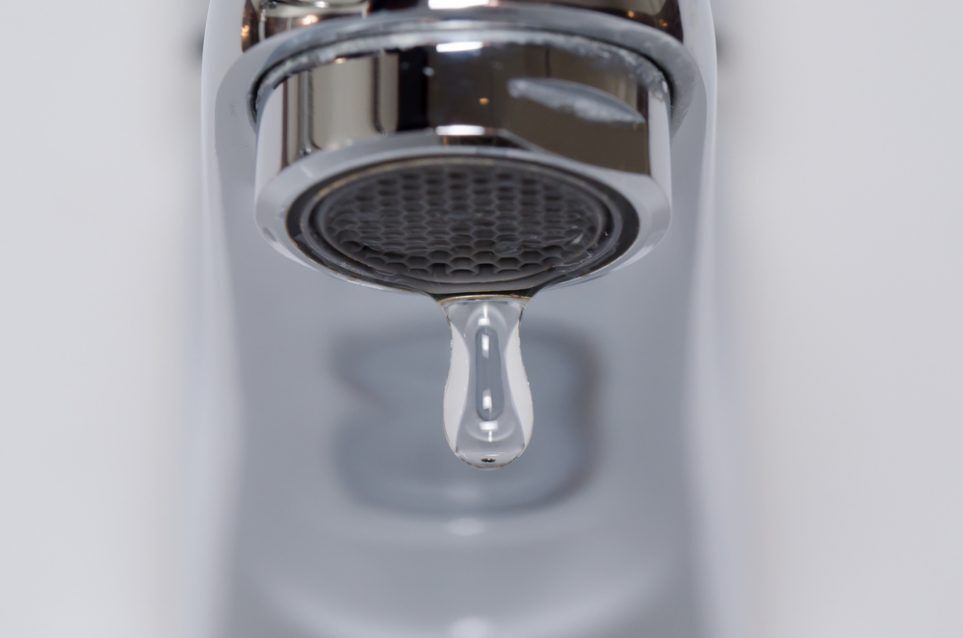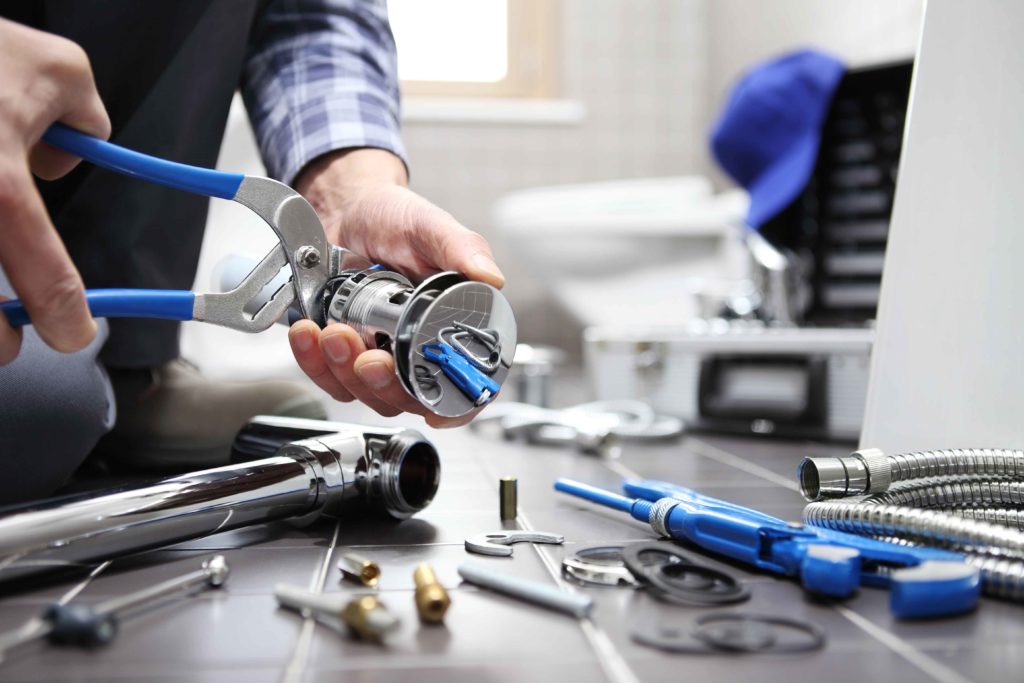What It's Important to Fix a Leaking Faucet
What It's Important to Fix a Leaking Faucet
Blog Article
What're your thoughts on Why It's Important to Fix Leaky Faucets?

Leaking taps may seem like a minor aggravation, yet their effect goes beyond simply the nuisance of the sound. From drainage to incurring unneeded monetary prices and health and wellness dangers, neglecting a trickling tap can cause numerous consequences. In this write-up, we'll look into why it's vital to address this usual home issue without delay and successfully.
Wastage of Water
Ecological Impact
Trickling faucets add dramatically to water wastefulness. According to the Environmental Protection Agency (EPA), a solitary faucet dripping at one drip per secondly can lose more than 3,000 gallons of water each year. This not just pressures water resources but also influences communities and wild animals dependent on them.
Step-by-Step Guide to Taking Care Of a Dripping Tap
Devices Called for
Before trying to fix a dripping faucet, gather the needed tools, consisting of an adjustable wrench, screwdrivers, substitute components (such as washers or cartridges), and plumber's tape.
Typical Tap Issues and Their Solutions
Recognize the sort of tap and the details concern causing the drip. Common issues include damaged washing machines, rusty valve seats, or defective O-rings. Describe manufacturer instructions or online tutorials for detailed support on repair services.
Financial Prices
Increased Water Bills
Past the ecological effect, leaking faucets can blow up water expenses substantially. The built up wastefulness gradually translates right into higher utility expenditures, which might have been prevented with timely repairs.
Potential Residential Property Damage
In addition, extended dripping can bring about damage to components and surfaces bordering the faucet. Water build-up can trigger staining, corrosion, and even structural issues if left unattended, leading to added repair prices.
Wellness Issues
Mold and Mildew Development
The consistent existence of wetness from a dripping faucet develops an excellent environment for mold and mildew development. These fungis not only endanger interior air top quality yet also position health and wellness dangers, particularly for people with respiratory system problems or allergies.
Waterborne Diseases
Stationary water in dripping faucets can become a breeding ground for microorganisms and other pathogens, boosting the danger of waterborne diseases. Contaminants such as Legionella bacteria flourish in stationary water, possibly causing serious ailments when consumed or breathed in.
DIY vs. Specialist Repair work
Advantages and disadvantages of Do It Yourself Fixing
While some might attempt to repair a leaking tap themselves, DIY repair work come with their very own collection of challenges. Without appropriate expertise and devices, do it yourself efforts can intensify the concern or lead to incomplete repair services, lengthening the trouble.
Benefits of Working With an Expert Plumber
Employing a professional plumber makes certain that the underlying source of the dripping tap is resolved successfully. Plumbing technicians have the proficiency and tools to detect and repair tap problems effectively, conserving time and reducing the risk of additional damage.
Ecological Responsibility
Private Contribution to Conservation
Taking responsibility for repairing leaking taps lines up with more comprehensive initiatives towards water preservation and ecological sustainability. Every individual's actions jointly make a significant impact on preserving valuable resources.
Sustainable Living Practices
By focusing on punctual repair services and embracing water-saving habits, people add to sustainable living techniques that profit both present and future generations.
Safety nets
Routine Upkeep Tips
To avoid trickling faucets, execute routine upkeep such as cleaning up aerators, inspecting for leakages, and replacing damaged components quickly. Additionally, think about mounting water-saving devices or updating to extra reliable fixtures.
Relevance of Prompt Services
Resolving leaking taps as soon as they're observed protects against further water waste and prospective damages, inevitably saving both water and money in the long run.
Effect On Residential Or Commercial Property Value
Understanding of Well-Maintained Residential Property
Keeping a property in good condition, including addressing maintenance problems like dripping faucets, enhances its perceived value and value amongst possible buyers or renters.
Impact on Resale Value
Qualities with well-maintained plumbing fixtures, consisting of taps, command higher resale values in the real estate market. Dealing with leaking faucets can add to a positive perception during residential or commercial property inspections and settlements.
Verdict
Resolving a trickling faucet surpasses plain convenience; it's an essential step toward conserving water, decreasing economic costs, and protecting wellness and home. Whether via do it yourself fixings or specialist aid, taking action to fix dripping taps is a tiny yet impactful means to advertise accountable stewardship of sources and add to a healthier, more sustainable future.
How to Fix a Leaky Faucet: Step-by-Step Repair Guide
A leaky faucet may seem like a simple annoyance, but if it's not fixed promptly, that leak could cost hundreds to potentially thousands. From water damage to mold, mildew, and high water bills, even a tiny leak can be catastrophic if left unattended. Damage like this can even affect the overall value of your home, so it's important to take the right approach for leaky faucet repair. You may need the help of a plumber in some cases, but we've got a few tips you can try on how to fix a leaky faucet before calling the pros.
Four Faucet Types
When you're learning how to fix a leaky faucet, the first step is knowing what kind of faucet you're working with! There are four common types.
Cartridge Faucets
Cartridge faucets come in one- or two-handled varieties. In one-handled cartridge faucets, hot and cold water combines in a single cartridge. In the two-handled versions, hot and cold water are controlled separately and mixed in the faucet.
Ball Faucets
Ball faucets have a single lever you push up and down to adjust the pressure and rotate to change the temperature. A slotted metal ball controls the amount of water allowed into the spout.
Compression Washer Faucets
They're the oldest type of faucet, but they're still used in many homes — especially older ones. Compression faucets have two separate handles that, when turned, raise or lower the washer that seals a water valve. This valve stops water from flowing through the faucet when it is turned off.
Disc Faucets
Disc faucets rarely need to be repaired due to their maintenance-free design. The water flow is controlled by two discs — the upper one raises and lowers against a fixed lower disc, creating a watertight seal. If your disc faucet starts leaking, you may need to replace the seals or clean residue buildup from the inlets.
Fixing a Leaky Faucet
Step 1: Turn Off the Water
Whether you're learning how to fix a leaky bathtub faucet or how to fix a leaky kitchen faucet, always turn off the water supply to your working area when you're fixing a leak. The last thing you want is a flood added to your list of things to fix.
Look for the shutoff valves below your sink or around the tub and turn them clockwise to stop the water flow. If your faucet doesn't have shutoff valves, you may need to turn off the water for the whole house. Check to make sure it's off by turning the faucet on. If nothing comes out, you're ready to start the repair.
Step 2: Take Apart the Faucet
How you disassemble your faucet depends on the type of fixture you have. You can use a flathead screwdriver to remove the caps on top of the handle or handles for cartridge and compression faucets. Inside, you should see handle screws. Unscrew these with a screwdriver to remove the handle.
Disc- and ball-style faucets will typically have an inlet screw near the handle, and removing that will reveal the interior of the faucet.
Detach the Valve Stem
For cartridge- and compression-style faucets, you'll see the inner valve stem or cartridge once you remove the faucet handles. If you have a compression faucet, unscrew the brass valve stem. If you have a cartridge faucet, pull out the cartridge. If your cartridge has been in place for a while, it may require some tools or extra force to remove it due to mineral deposits.
Examine and Replace Parts
Once you've removed the parts, check them out to confirm what needs to be replaced. You may see corroded rubber washers, O-rings, stems, or cartridges. On a ball-style faucet, check the seats and springs for damage.
If you need to repair a leaky disc faucet, check the inlet and seals on the lower disc.
Once you determine what parts must be replaced, visit your local hardware store. Bring the damaged parts with you to ensure you can purchase the correct components to replace them.
Clean Valves and Faucet Cavity
If you've removed a stem or cartridge, you may notice mineral buildup in the faucet's threads. Use white vinegar to clean the valve seat by soaking it for a few minutes, then scrub it away with a soft toothbrush and rinse with warm water. You can also clean the interior of the faucet in the same way.
Reassemble the Faucet
Once your faucet is cleaned and the required parts have been replaced, it's time to reassemble it. Put the pieces back together and slowly turn the water supply back on. Doing this slowly is crucial because too much initial water pressure can damage the new hardware you've just installed.
https://homewarranty.firstam.com/blog/how-to-fix-leaky-faucet

We were made aware of that editorial on from an associate on a different website. For those who enjoyed our blog post please don't forget to pass it around. We love your readership.
Report this page